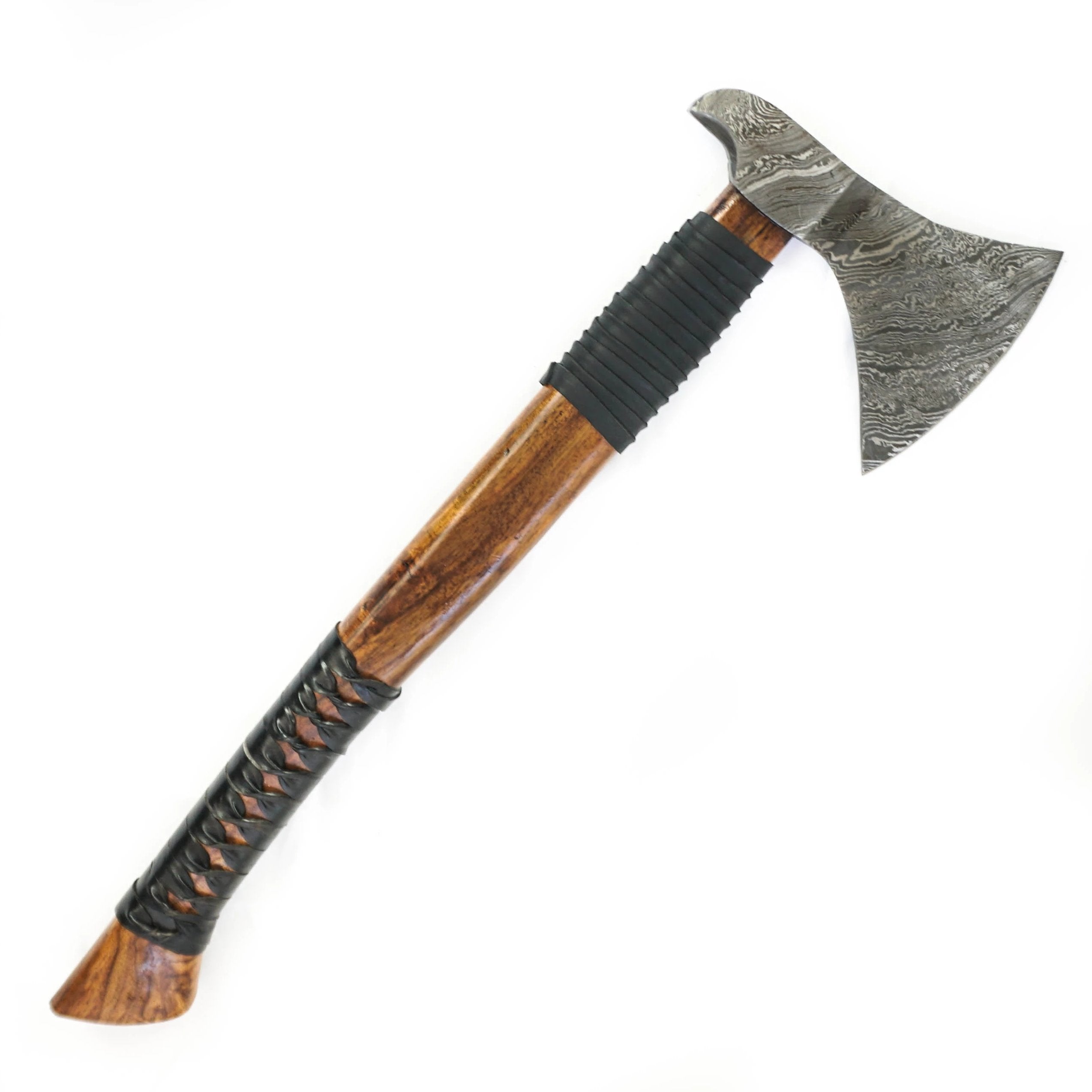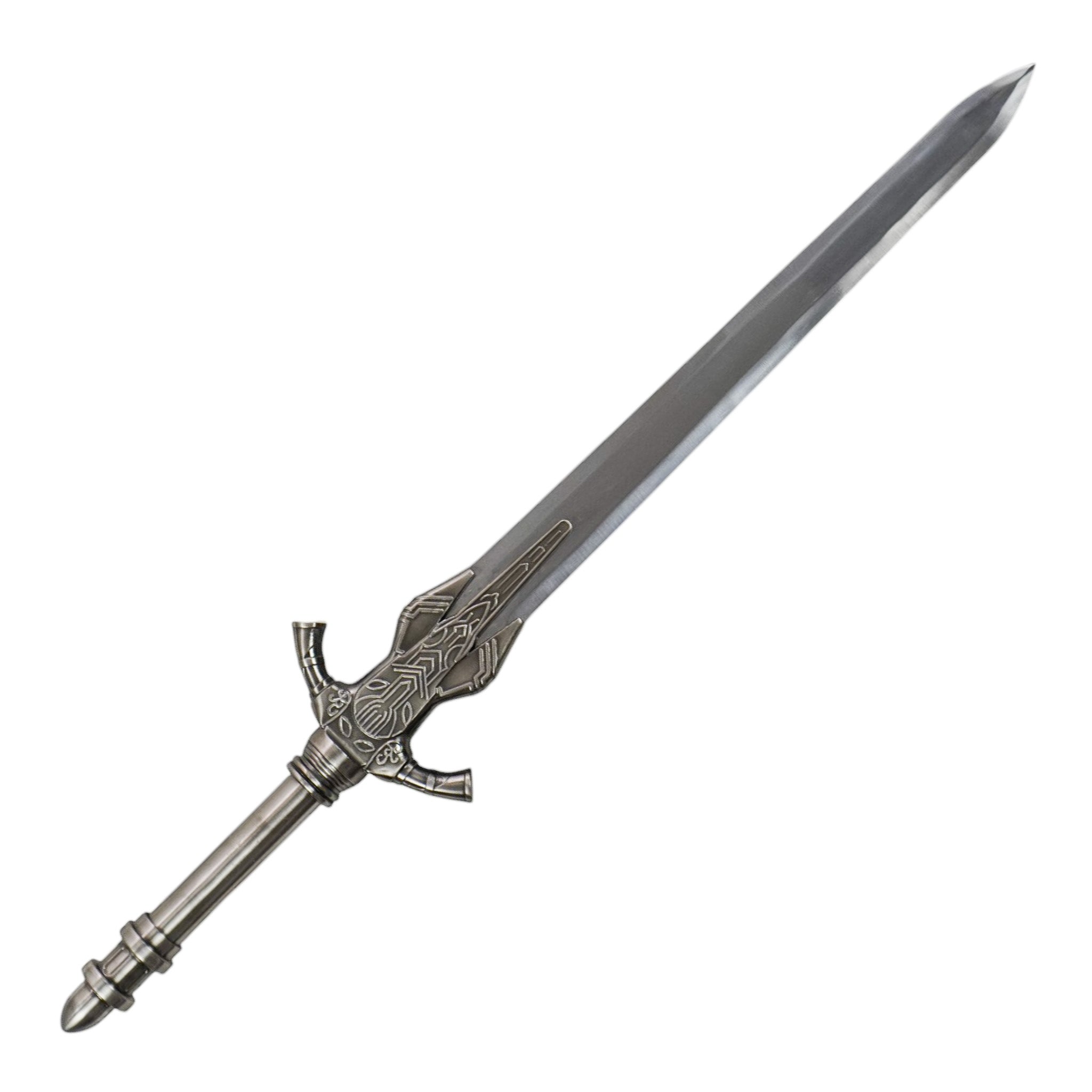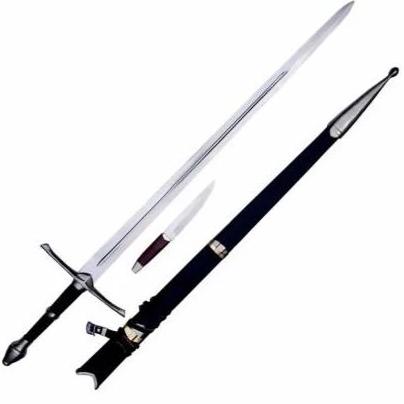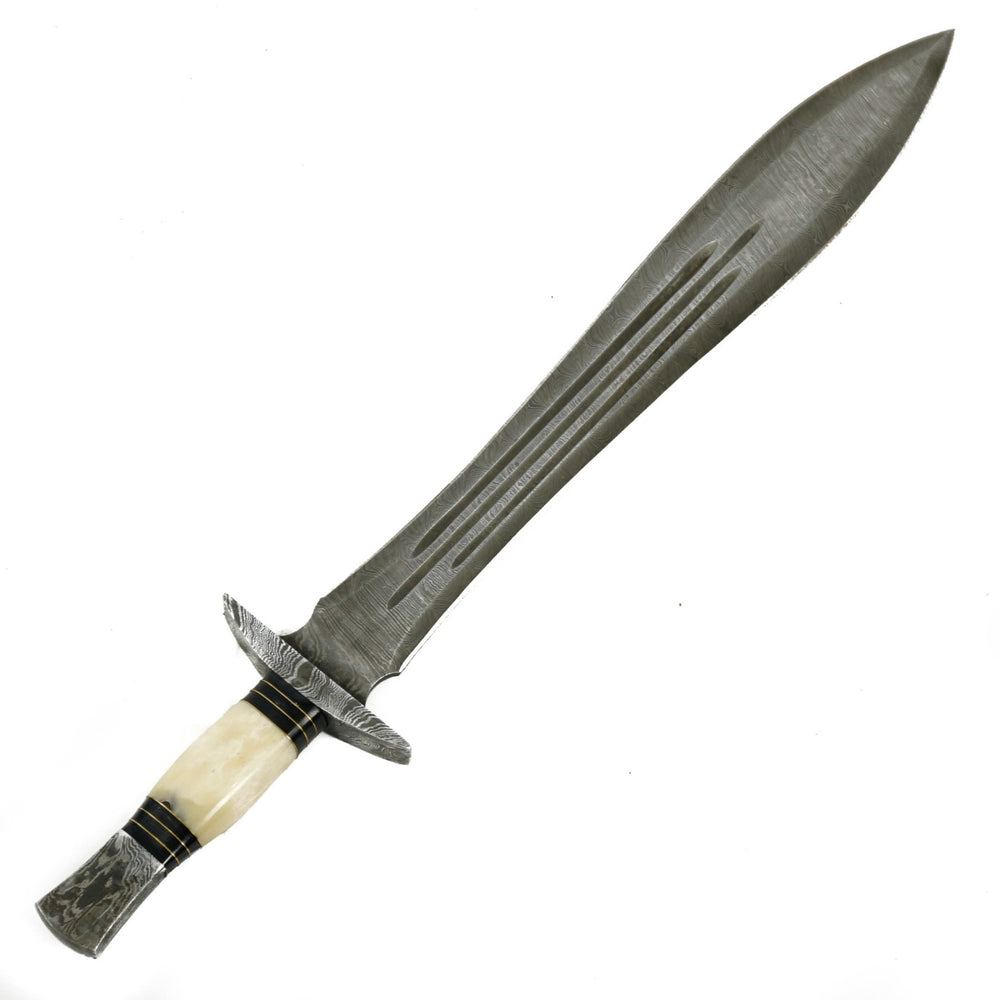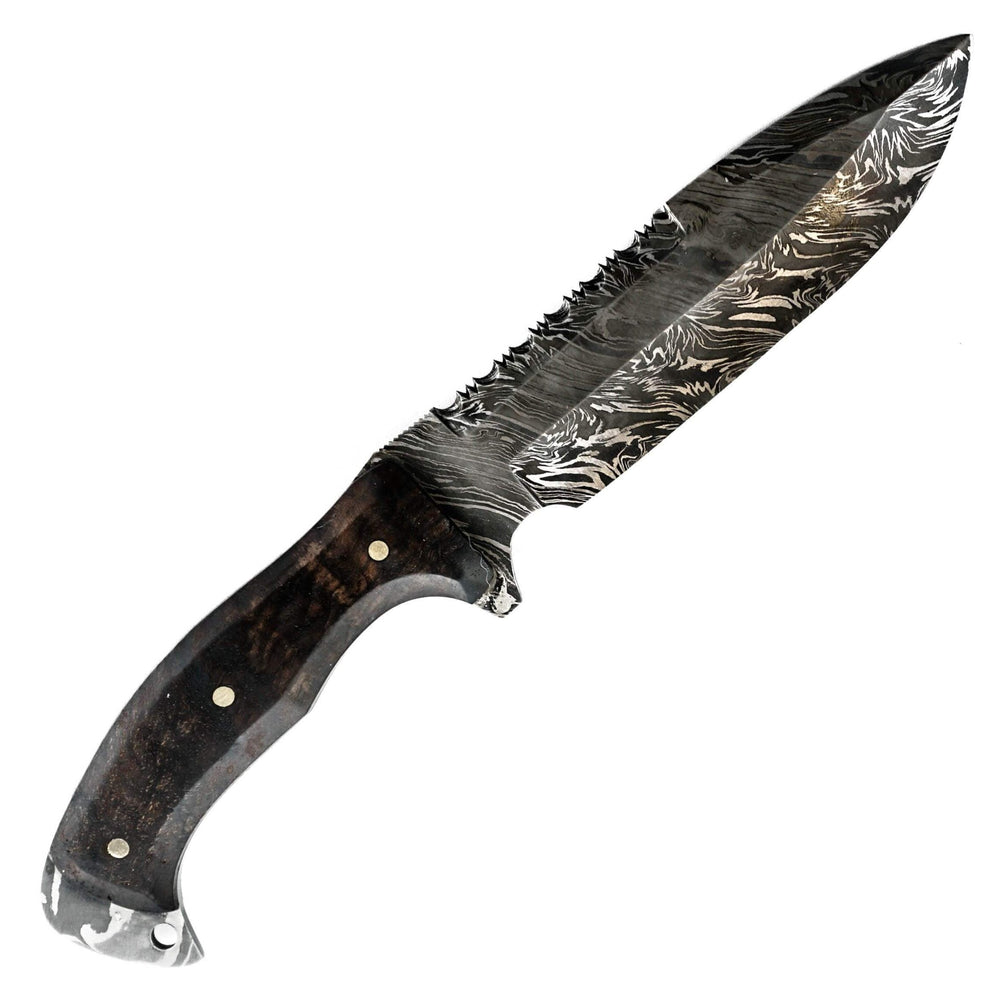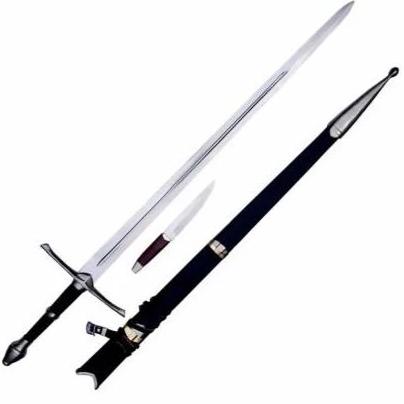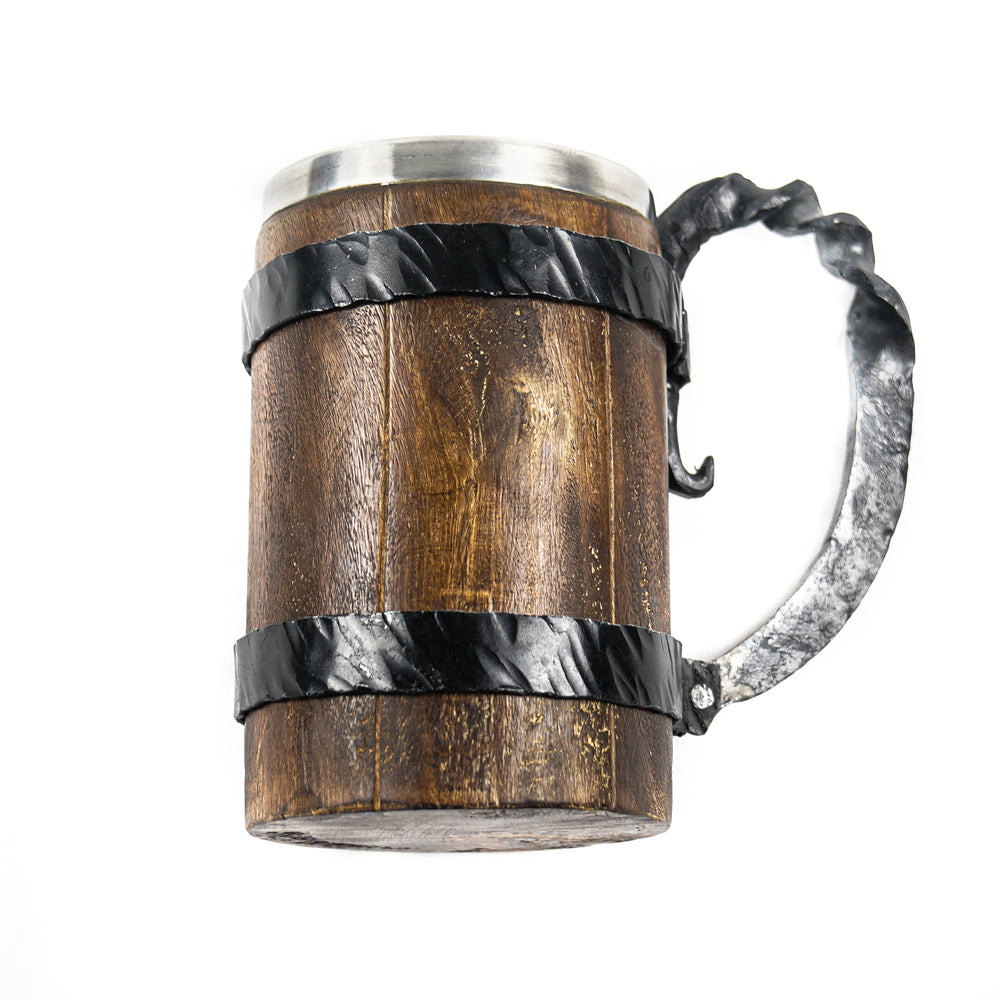Famous Viking Swords: Legends Of Valor That Shaped History
Famous Viking swords have captured the imagination of people for centuries. These legendary weapons are symbols of courage, and their stories have shaped history.
From the mythical sword of King Arthur's Excalibur to the deadly weapon wielded by Beowulf; the famous Viking swords have always fascinated historians and enthusiasts alike.
These swords embody the fierce spirit of the Vikings, their love for battle, and their unwavering loyalty to their clans.
Let’s explore some of the most famous Viking swords that left a lasting impact on history with their tales of valor and bravery. Get ready to dive into the world of Viking swords and discover their captivating legends.
What Are The Famous Viking Swords Called?
For starters, if you come here with the query “What is a Viking sword called?”, we have the answer for you.
Viking swords, commonly known as "Ulfberht swords", were the epitome of craftsmanship and power during the Viking Age. These swords were more than just tools of war; they symbolized the warrior's honor and prowess.
What Did Viking Swords Look Like?
Viking swords were characterized by their distinctive design elements. Typically, they featured double-edged straight blades with a slight taper allowing it for both slashing and thrusting maneuvers.
Moreover, the hilt of these swords often displayed intricate metalwork and ornate patterns, showcasing the skilled craftsmanship of the time.
Famous Viking Swords: Categorization
Viking swords were categorized based on their design, length, and era. Earlier, these swords were single-edged swords with a length of around 2-3 feet. They were known for their deep fuller, which ran almost the entire blade length.
Another Viking sword type includes double-edged blades, typically longer and designed for slashing and stabbing. They had a 3-4 feet length and a more elaborate hilt design to provide a better grip.
The famous Viking swords were also divided by the era they were produced. The swords produced during the 8th century differed entirely from those made between the 9th-10th centuries.
Famous Viking Swords: Unveiling The Legendary Hilt Designs
Viking sword handles have special designs. They show stories of bravery and strength in the world of these swords. The craftsmanship and artistry that went into creating these hilt designs were as crucial as the blade itself.
In fact, the Viking swords weren't just weapons; they were symbols of a warrior's status, a testament to their skill and courage.
The hilt of a famous Viking sword wasn't merely a utilitarian component. It was a canvas for intricate carvings, engravings, and embellishments that showcased the individuality of the sword and its owner.
Besides, the Viking swords handles had different styles, like the simple Icelander Sword or the fancy Skofnung Sword with intricate details.
Moreover, the hilt wasn't just about aesthetics; it served a functional purpose too. The ergonomic shape and grip of the hilt ensured that the sword could be wielded effectively in battle. Also, it allows the Viking warriors to strike with precision and force.
The hilt designs often incorporated symbols from Norse mythology, further connecting the weapon to the warrior's beliefs and heritage.
While learning about Viking swords, pause to admire the skilled work behind their hilt designs. Each curve and engraving tells a story of the Viking spirit – fierce, skilled, and deeply rooted in their culture.
These designs, along with the legendary blades, stand as a testament to the enduring legacy of the Vikings in history.
If you have the query “How much is a real Viking sword worth?” check Battling Blades today!
If you're looking to buy Viking swords, many different types are available on the market. However, it's important to research before purchasing to ensure you get a high-quality, genuine item.
Viking swords vary greatly in quality, materials, and historical significance, so knowing what you're looking for is important before deciding. Some of the famous Viking sword names include:

1. The Ulfberht Sword
One of the most famous Viking swords is the Ulfberht sword. It was a high-quality imported blade made of crucible steel. The sword was famous for its flexibility and resistance to breakage.
The name Ulfberht is written on many swords, but there is no evidence to suggest it was the name of a swordsmith. Instead, the name was likely used to denote the high quality of the steel used in the sword.
The sword had 3-4 bars on its hilt, which provided stability and strength. In fact, the Ulfberht sword was widely recognized and considered a valuable asset in Viking culture.
Nowadays, owning a genuine Ulfberht sword replica could cost a fortune and take a significant place in any collection.
2. The Gungnir Spear
The Gungnir spear is one of the most well-known weapons in Viking mythology. The word "Gungnir" means "swaying one" in Old Norse, and it was said to be capable of always hitting its target.
According to legend, the Gungnir spear was wielded by Odin, the king of the gods. If you are thinking about “what were Viking swords made of?” It was said to be made of the finest materials, including gold and silver, and was inscribed with mystical runes.
Though it is unknown if the Gungnir spear was a real weapon ever used in battle. But, its reputation as a weapon of the gods has made it a popular item among collectors of Viking artifacts.
3. The Skofnung Sword
The Skofnung sword is another famous Viking weapon. According to legend, it was wielded by the legendary Danish king Hrolf Kraki, who won many battles with it. The sword was said to be enchanted and considered one of the greatest weapons of its time. It was also said to be extremely sharp, and its blade was made from the finest iron.
The Skofnung sword is a highly sought-after item for collectors and enthusiasts of Viking history. We don't know where the sword came from, but its legendary fame makes it a hot topic for history fans.
4. The Tyrfing Sword
The Tyrfing sword is another famous Viking weapon. It was a magical sword that was said to have been forged by dwarves. According to legend, the sword was cursed, and whoever wielded it would inevitably meet their end in battle.
Interesting fact: The warrior Svafrlami used the sword to win battles but was cursed, leading to his death in combat.
The Tyrfing sword is notable for its unique design, including a hilt of the finest gold and jewels. Today, the sword is popular among collectors and historians alike, fascinated by its unique history and a mysterious curse.
5. The Icelander Sword
The Icelander Sword is a famous Viking sword that hails from Iceland. It is a single-edged sword commonly used by Viking warriors during the 9th to the 11th centuries. The sword's blade is long and thin, measuring around 30 inches long, making it perfect for slashing and thrusting maneuvers.
This sword is known for its simplicity in design, as Viking warriors often preferred practicality over flashy aesthetics. The Icelander Sword's handle is made from wood, bone, or antler and is typically adorned with basic carvings or engravings.
Therefore, this sword is perfect for anyone wishing to recreate the Viking lifestyle or add a piece of history to their collection.
6. The Nordic Sword
The Nordic sword names, including the "Heimdall's Sword" is a carefully made replica, honoring the skill of ancient Norse craftsmen. This exquisite replica faithfully captures the essence of the sword wielded by Heimdall and the watchful guardian of Asgard in Norse mythology.
With a blade that mirrors elegance, the Heimdall sword replica transports enthusiasts and collectors. Its hilt boasts intricate designs that pay homage to the rich symbolism of Norse cosmology.
Whether displayed as a remarkable piece of artistry or wielded in imaginative play; the Heimdall’s sword replica embodies the mystique of the North and the enduring allure of mythical weapons.
The Surrounding Viking Swords
The famous Viking swords hold both mythological and historical significance in Norse culture. These weapons were not only tools of warfare but also symbols of power, honor, and bravery.
Mythological Significance
- Viking swords are often associated with Norse mythology and heroic legends.
- These swords were believed to possess magical properties, granting their wielders strength and protection.
- Some swords were connected to mythical figures such as Odin, Thor, or Freyja.
Historical Significance
- Viking swords played a crucial role in Viking society, representing a warrior's status and skill.
- They were crafted with exceptional craftsmanship, using techniques passed down through generations.
- The swords symbolized the Viking spirit and their relentless pursuit of conquest and exploration.
Stories Of Famous Battles Involving These Swords
The Battle Of Stamford Bridge
The Battle of Stamford Bridge occurred in 1066. It was a clash between English soldiers led by Harold Godwinson and Norwegian invaders commanded by King Harald Hardrada.
During this fierce encounter, King Harald wielded a formidable Viking sword, which he used as his weapon on the battlefield. Despite the eventual victory of the English, the battle left a lasting impression by highlighting Viking warriors' incredible strength.
The Battle Of Maldon
Taking place in 991, the Battle of Maldon brought together Anglo-Saxon defenders and Viking raiders led by Olaf Tryggvason. This battle showcased the prominence of the Viking sword as a weapon of choice for the raiders.
However, the Anglo-Saxons faced defeat in this battle. Their unwavering courage and fierce resistance against the Viking invaders became legendary, symbolizing their determination.
The Battle Of Stiklestad
The Battle centered around the conflict between forces loyal to King Olaf II of Norway and opposing factions. King Olaf II, known as Saint Olaf, participated in the battle wielding a Viking sword.
Even though King Olaf lost and died, this battle made him an important martyr in history. Furthermore, the battle's impact extended beyond the battlefield. It contributed significantly to the spread of Christianity throughout Norway.
These historic battles not only left their mark on Viking history, but they also underscored the vital role swords played in the hands of skilled warriors.

Legacy Of Viking Swords On Modern Times
The fame of Viking Swords has been passed down through generations as an icon of the Norsemen's military prowess. Several famous Viking swords, including the legendary Ulfberht sword, were marvels of ironworks. They are still regarded as one of the most significant swords in history.
The techniques used to create Viking swords have influenced modern sword-making. The intricate Ulfberht production method set a standard, influencing blade-making worldwide. The Viking sword remains a popular collectible and a prominent symbol of Norse culture.
Preservation And Identification Of Viking Swords
The preservation and identification of Viking swords have become more critical today than ever, given their historical and material value. Therefore, significant efforts have been made by museums and experts to preserve these highly-regarded swords.
Experts typically examine the sword's hilt, pommel, and blade structure to identify Viking swords. Viking swords primarily comprise iron, carbon, and other trace minerals. The hilt and pommel of the sword are usually made of bone, horn, antler, and sometimes even precious metals. As such, authentic Viking swords are highly valuable and deemed expensive artifacts.
Modern-Day Sword Replicators
The demand for Viking Sword replicas has grown with the rise of interest in mythology, Viking culture, and swords. Modern-day sword replicators have become increasingly skilled at making high-quality swords. So, it would match and pay homage to the historical Viking swords.
Replicators use modern and traditional techniques to craft swords that capture the essence of these historical artifacts. Many have mastered even the smallest details, such as the runes inscribed on the blade. Today, it is possible for anyone to buy a Viking Sword replica, and it now serves as a stylish home decor item.

Museum Exhibitions
The swords play a significant role in preserving and showcasing the legacy of Viking swords. Several world-famous museums house some of the most prized Viking swords, including the Viking ship displayed in the Viking Ship Museum in Oslo, Norway.
Museum exhibitions not only educate visitors about the history of these swords but also celebrate the artistry and skill of their makers. The exhibitions further reveal how Viking swords played a role in Norse society, culture, and warfare over the years.
Viking swords have left a monumental legacy in history and continue to impact our modern-day experience. Understanding and preserving their value for future generations is essential in supporting their legacy.
The Final Verdict
The famous Viking swords are more than just weapons - they represent a legacy of valor and bravery that shaped history. Over the centuries, swords have transcended the boundaries of time and geography.
Moreover, it takes on mythical proportions and inspires countless tales of Viking warriors. These swords symbolized power, prestige, and highly functional weapons that could slice through most armor and shields.
From the legendary Ulfberht sword to the mystical sword of Skofnung, each Viking sword has its own story. These swords were crafted by skilled artisans who imbued them with magic and mystique through intricate carvings and engravings.
Viking swords remain famous and captivating even now, making a strong mark in history's story.

